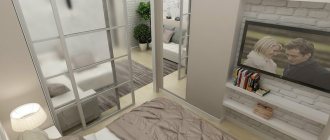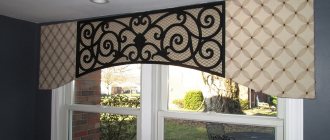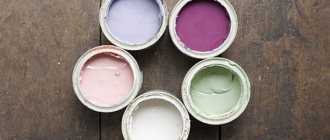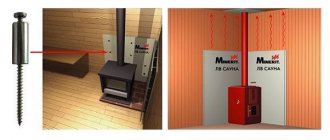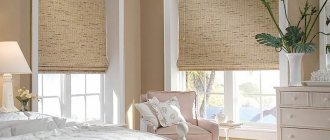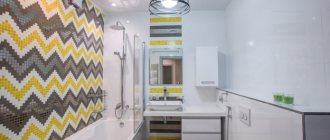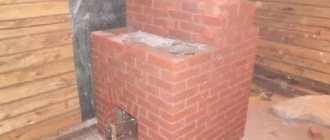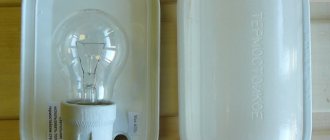With the help of decoupage you can transform absolutely everything - we have already told you how to update an old bedside table or table lamp. The main thing is that this is a fairly simple and inexpensive way to make something unique with your own hands for your home. I want to show you a step-by-step master class on decorating a decorative plate using the reverse decoupage
. The name “reverse” means that we will decorate the plate from the reverse side. In addition, if in usually decoupage we first prepare the surface and paint it, and only then glue the decoupage napkins, then in the opposite case we will do everything completely the opposite. So let's begin!
Reverse decoupage of plates: master class
To work you will need:
- glass plate;
- decoupage paper (or napkins);
- varnish;
- acrylic paints (white and gold);
- gold outline;
- craquelure varnish;
- acrylic gold outline;
- brushes (or sponge);
- sandpaper.
What is plate decoupage?
Decoupage is a technique for decorating dishes by gluing part of a picture to it with a final coating of varnish so that it is well fixed, and literally “decoupage” translated from French means the word “cut”. The founders of decoupage were German artisans of the late fifteenth century, who began decorating simple furniture with similar pictures.
In the seventeenth century, Europe was swept by a wave of hobbies with various motives, and therefore all countries became interested in homemade decoupage, so after some time, it became widespread; but this technique came to Russia only at the beginning of the 21st century, and has gained great popularity only in our time. Using this technique, you can decorate the surface of both disposable plates and plastic bottles and various ceramic dishes. An old wooden tabletop can also become beautiful and decorative if you apply decoupage to it. And decoupage plates can even look like works of art - I was convinced when I came across amazing works by Polish craftswomen on one of the sites, where everything from an Easter egg to a New Year's tree ball looked simply masterpiece!
The easiest thing for newbies will be decoupage of glass plates, then in the same style you can start decorating furniture, handbags and other things - the main thing is to find a good mk. The theme can be different: New Year's landscape, flowers, still lifes, even details of traditional paintings. Or, why not, old photos of your favorite uncle. The main thing is that you create this product with your own hands.
Popular articles Teddy bear
What we need for the master class:
- Dishes.
- Napkins - these can be high-quality napkins for decoupage or simple products with any pattern.
- Picture or any photo.
- Glue for acrylic.
- Sharp scissors.
- Alcohol.
- Craquelure.
- Eggshell.
- Nice brushes.
- Varnish.
- Primer.
- Acrylic paint of any color.
- Oil-based gold or other paint.
The entire list will not be needed for the master class. You need to take all the tools, but you can take just one thing from napkins, photos, craquelure or eggshells.
Decoupage plates are divided into the following types:
- With napkins. If special napkins are used, which are needed specifically for decoupage, then they need to be layered, removing the top part; if simple analogues are used, we do not separate them into layers, but glue them as they are.
- With craquelure. We paint the plate with paint of the desired composition, which will crack textured when dry.
- Eggshell. Glue fragments of eggshells onto the drawing, photo or the area around them as a frame.
- Photo design. The style and technique are the same as when using napkins, we just use printed photos as an image.
In addition, decoupage plates are divided into the following types:
- straight - we put a drawing or photograph on the front of our dishes.
- reverse decoupage - we apply the design to the reverse side. Most often, they are used on transparent saucers.
Decoupage of plastic plates: 9 necessary tools
It requires special skill and knowledge of a special technique to apply decoupage to plastic plates. Disposable plates are usually used in teaching decoupage techniques to children aged 3 and older; the main thing is to arouse children’s interest in this work. To do this, a master class is held with a step-by-step demonstration of movements in the style of a magician - one or two, and you're done. Children are fascinated by the process, they become interested, and they get involved in the work with pleasure, begin to do the same as adults do, urging them on with questions: “What’s next, what’s next”….
Thanks to the decoupage technique, you can make an original gift from a simple plastic plate.
All you need:
- Disposable plates;
- There are two types of paper napkins - plain and matching with patterns;
- PVA glue;
- Brushes with different bristles quality;
- Simple pencil;
- Scissors;
- Scotch;
- Double-sided adhesive tape;
- Decorative elements as desired - sequins, foil, ribbons, beads, seed beads.
Popular articles Peony made of plastic suede
The goal of the children's master class is to teach step by step how to make direct decoupage using accessible means, to attract children to creativity, and to develop creative thinking. Parents can also work with their children, giving them the impetus to develop an excellent hobby for the whole family.
The edges and design can be decorated with sequins, beads, and snowflakes. Adults can decorate the edges by painting with acrylic paints on dried glue or paper. This will give the work prettiness and tenderness. On the back side, don’t forget to glue a narrow loop of ribbon onto double-sided tape so that the plate can be hung on the wall.
Decoupage plates are divided into types:
With napkins. If special napkins are used, intended specifically for decoupage, then they are layered, separating the upper part; if ordinary analogues are used, they are not separated into layers, but glued as is. The execution technique can be found in Fokhtina’s photo and video lessons at the end of the article. With craquelure. The plate is painted with a paint of a special composition, which cracks textured when dry. Eggshell. Pieces of eggshell are glued onto the drawing, photograph or the area around them as a frame. Photo design. The style and technique is the same as when using napkins, just using a printed photograph as the image.
By combining different techniques, you can create something original.
Decoupage and golden acrylic paint
For decoration, you can also use printed photos or simply portrait images.
Owls cut from decoupage sheets
In addition to this method, decoupage plates are divided into:
- direct - an image or photo is superimposed on the front of the dish;
- reverse decoupage of a plate - the design is applied to the reverse side. Typically used on transparent saucers.
One of the most popular motifs is romantic, most often combined with aging
There is nothing complicated in the decoupage technique, you need to do everything carefully and follow the correct sequence
Popular articles Beaded duck
Nuances taking into account the decoration method
After completing several works in the classical style, you can try to make complex works.
With craquelure
The decoupage technique with craquelure on plates looks very original. You can get beautiful cracks that imitate “old age” by using a special crackle product. The composition can be single-phase or two-phase:
- a single-phase product is applied between layers of paint, and the last layer will crack. The top layer of paint is chosen in a contrasting color. Apply it with a sponge or brush. It is important to paint each area with only one stroke. It is recommended to dry the layers naturally;
- two-phase products are applied over all layers of varnish, which will crack due to craquelure. The craquelure is spread onto the dried varnish layer. Any cracks that appear are rubbed over with oil paints or bitumen mixed with pastels.
The size of the cracks depends on the thickness of the varnish; if necessary, you can dilute it a little with water. Products with cracks look very interesting, but the effect of aged dishes is not suitable for all types of interior.
With eggshell
Eggshells are used to create a relief pattern. Shells are taken from raw eggs, peeled from films, washed and well dried. The pieces should be medium in size. PVA glue is applied in droplets onto the prepared base. A piece of shell is pressed with a toothpick or your fingers. If necessary, you can split it into several small particles. It is convenient to use a toothpick to separate the pieces and fix the distance between them.
The plate is dried and another layer of glue is placed on top. The base with shell fragments is coated with white acrylic paint in several layers. A colored motif or pigment concentrate is fixed on top of the plate. When applying layers of paint, it is important not to fill the gaps between the shells too much in order to maintain relief. Further decoration is carried out at the request of the master. The finished work is coated with several layers of varnish. Relief plates imitate the style directions of Provence, ethno, and antique.
With photos
A plate with a photo is an excellent alternative to a standard photo frame. The image on the dish will not fade over the years. It is better to use a printout on rice paper or a decoupage card with a photo for decoration. When a print is made from a real photograph, the motif is thinned out. For fixation, it is better to use the reverse technique on a transparent base; new ideas can be found on thematic forums. You can decorate with photographs using the classical technique, but then the base should be as flat as possible so that the image lies evenly.
The photo should be clear and the faces should be large. It’s good if the background is light and monochromatic. The motif is fixed with varnish; the top of the photo is covered with several more layers of varnish so that the colored paint does not spoil the image. Afterwards the motif is painted over with white paint, then the photo will look brighter. The borders of the photo can be drawn, and the picture will stand out clearly. Another option is when the decor of the edges of the plate is made in the same color scheme as the photo, the boundaries are blurred as much as possible. Such a plate will look like a single picture.
With burnt parts
An unusual decoupage technique is the use of paper motifs with burnt edges. Preparation of the base is carried out as standard. Only paper motifs are fired. To do this, draw the desired outline on the back side of a decoupage card or printout. Next, the edges are set on fire with a lighter or candle. The flame must be extinguished in time with a wet cloth or wet hands. Experienced craftsmen recommend drawing the desired outline with a wet brush, then the flame will not burn too much.
Another firing option is to use a gas stove. The motif is clamped with tweezers or pliers and held over the flame. As a result, yellowish spots are formed on the surface of the motif, imitating antiquity. It is better to use fragments on thick paper for firing; napkins burn very quickly. The fired element is fixed on the plate in any preferred way. If you combine a burnt photo with golden craquelure, you will get an interesting decor option when the image looks like it’s on fire.
Volumetric decoration
Volumetric decoration allows you to create an imitation of modeling. The entire image is divided into 3 zones:
- background layer;
- foreground;
- intermediate layers.
The background layer is created from paper motifs. The drawing from the napkin is transferred to the base. Next, we begin to create volumetric elements. Use a “light paste” or finishing putty. The dry component is diluted with water to the desired consistency, then the mixture is applied with a spatula to the desired areas. I place maximum emphasis on foreground objects. After applying the mixture, you need to wait until it dries completely and rub the surface with fine sandpaper.
Volumetric elements, if necessary, are painted with the desired colors. The finished product is coated with several layers of varnish. Instead of putty, polymer plastic pastes that harden when dry, for example, Sospeso Trasparente, can be used in decoration. You can fashion any elements from thermoplastic and glue them to the base. There is also a type of volumetric decoupage of plates, when the relief is created by elements made of textured paper or corrugated cardboard.
Additional decor
If desired, it is possible to use various additional decorative elements in decoupage:
- rhinestones made of glass, plastic, acrylic. The elements are glued with glue and secured with varnish. Rhinestones are used to add accents and decorate New Year's balls, vases, and plates;
- pieces of textiles, lace, fur. Elements borrowed from patchwork can be fixed to any base. Photo plates decorated with lace look especially luxurious;
- feathers. The elements are not varnished, they are glued to the finished work;
- beads, cabochons, small natural and artificial stones. Elements are used pointwise to place accents;
- In marine themes, colored sand and small shells are often used. The elements have a beautiful natural color and do not require painting;
- slices of dried fruit, cinnamon sticks, cloves. Provence-style plates decorated with spices look especially harmonious in the kitchen.
The imagination of the masters is limitless. As they gain experience, many people use various decorative elements and their combinations in decoration.
Rhinestones
Lace
Feathers
Beads
Shells
